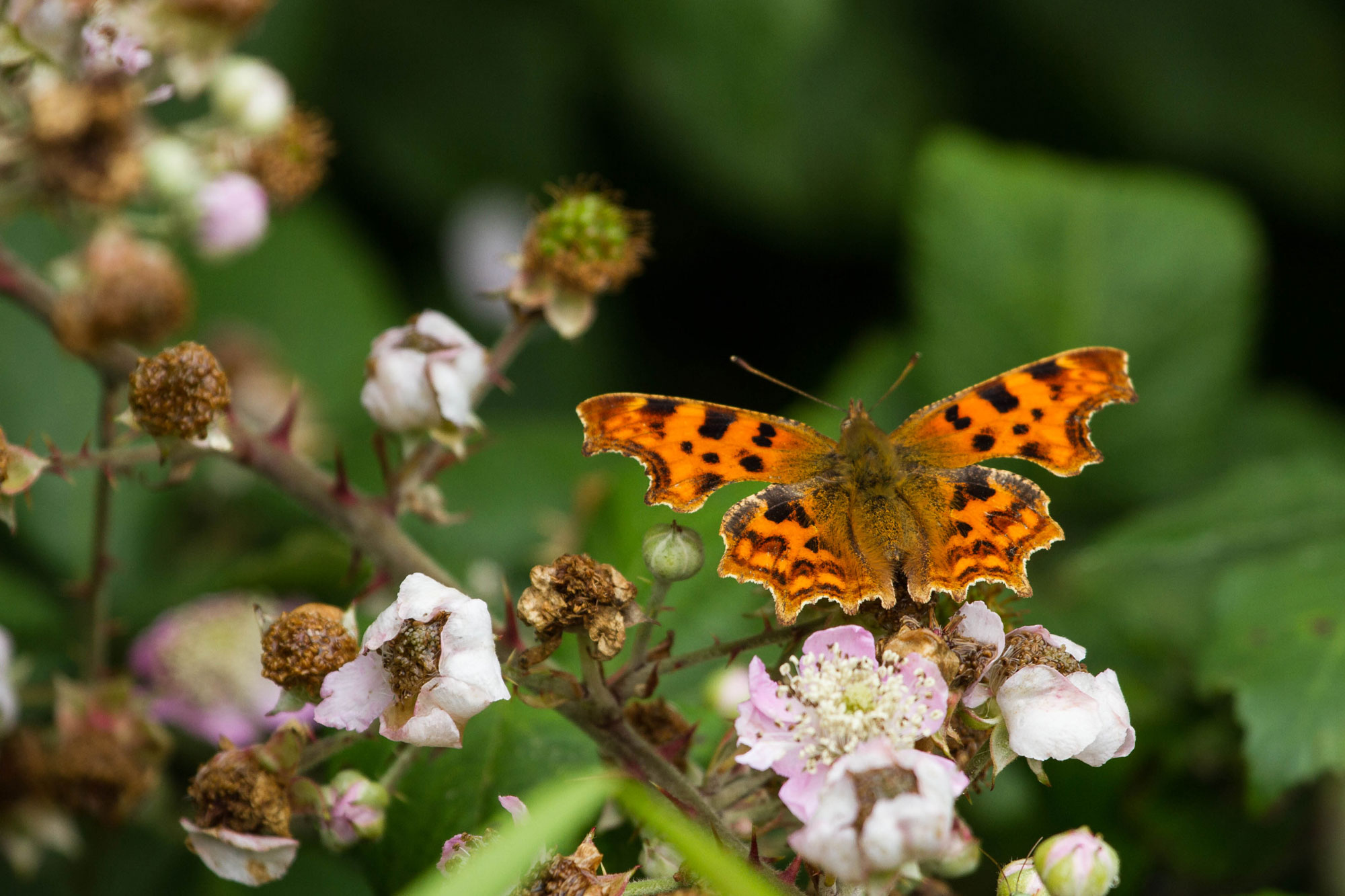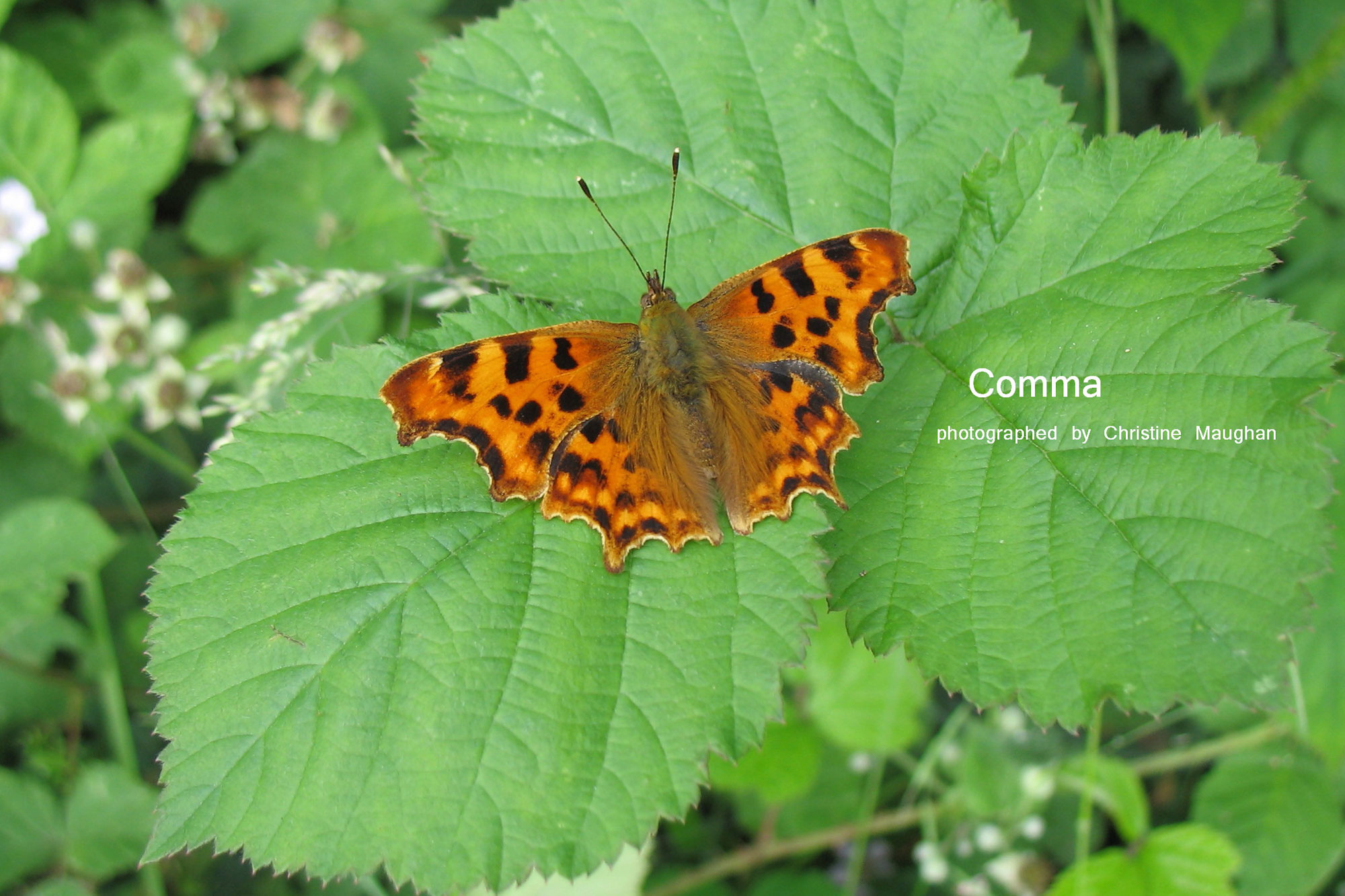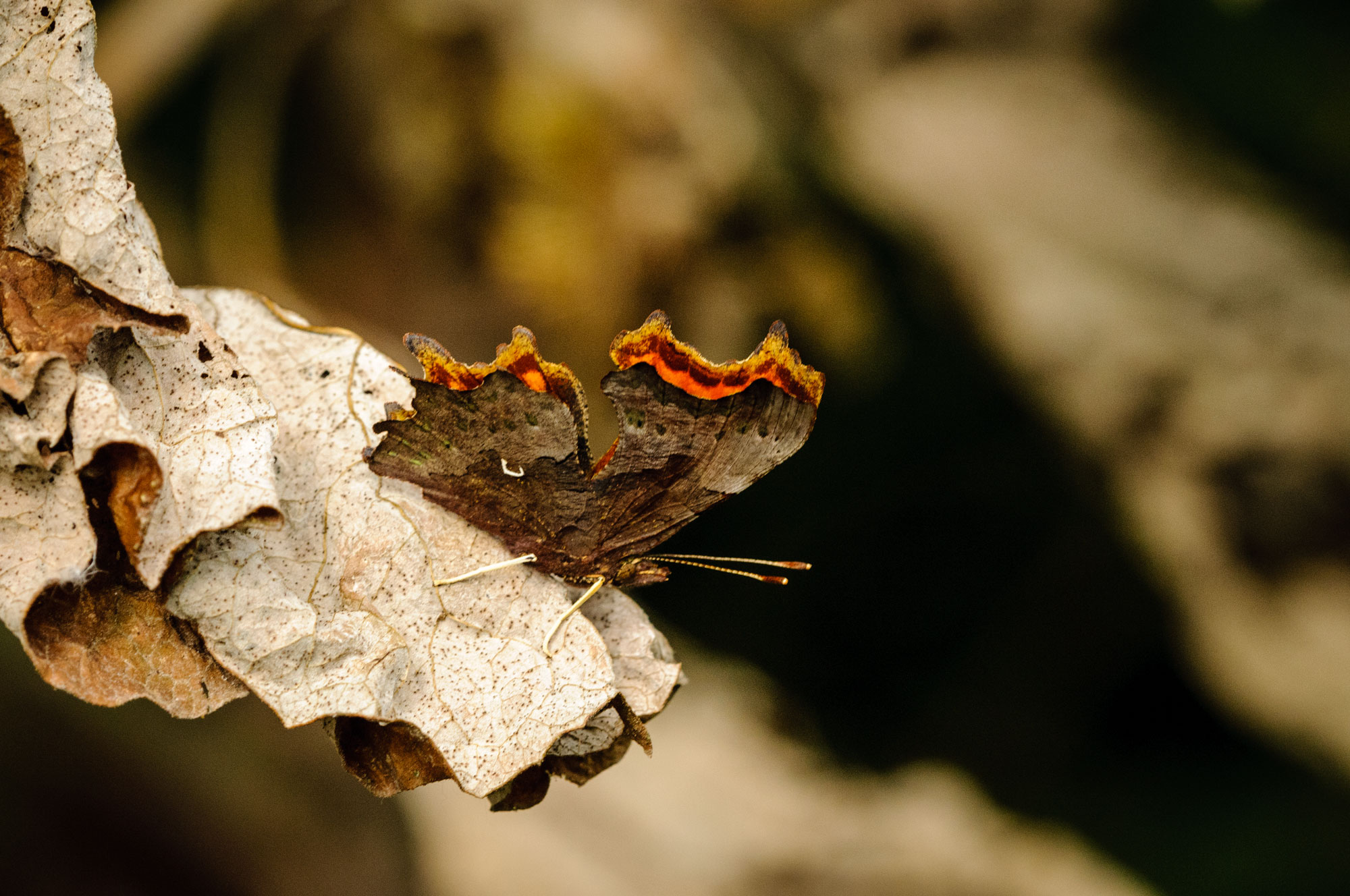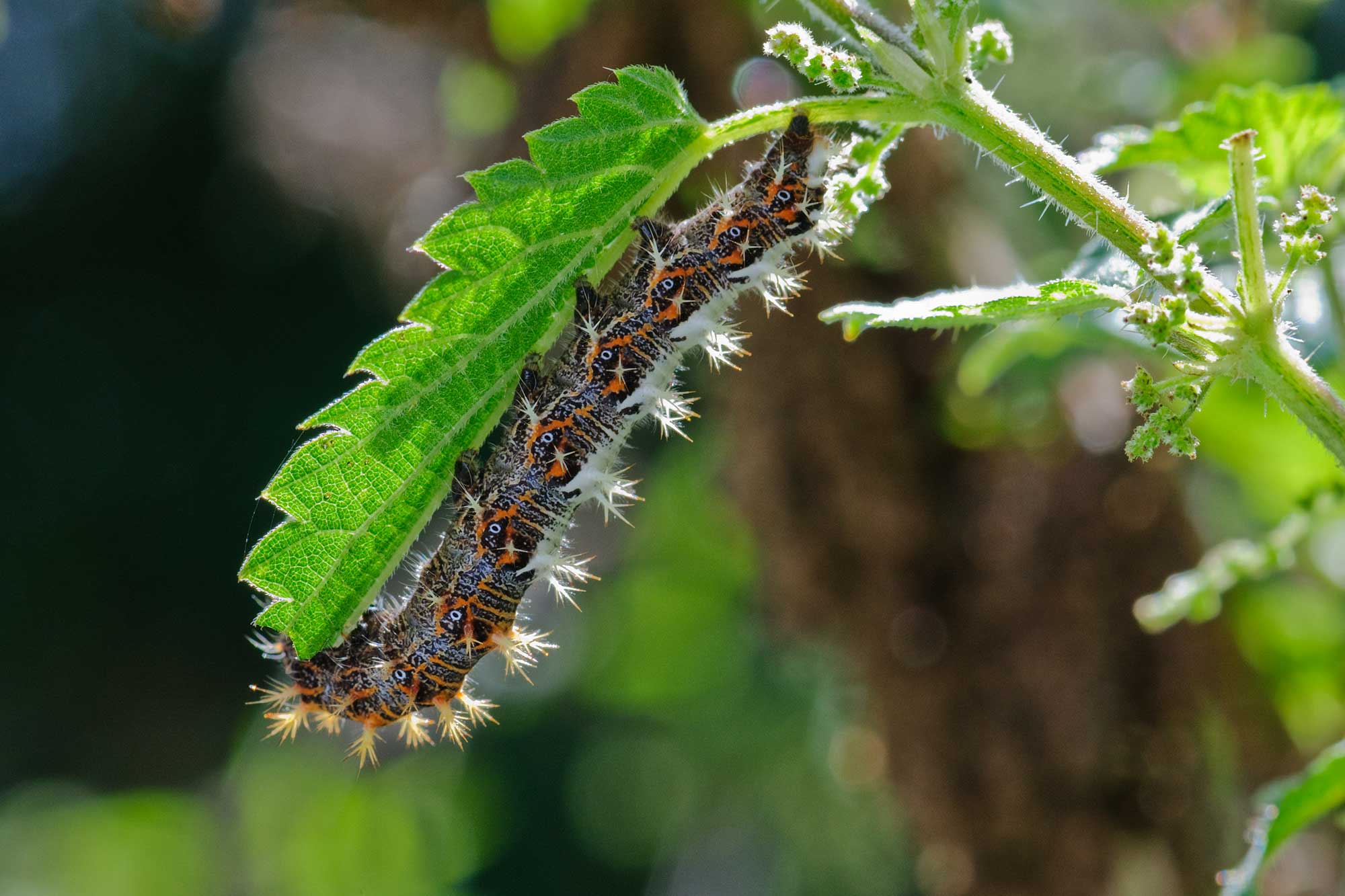
Comma Polygonia c-album
Habitat
The Comma is a common and widespread resident throughout England & Wales. It favours open woodland and woodland edges, and the second brood are often seen in gardens.
Identification
The Comma has a unique ragged outline, and gets its name from the distinctive white comma mark on the underwing.
Flight times
The Comma hibernates as an adult and usually emerges in March. These butterflies produce a brood which either develops quickly and flies in June/July, or develop more slowly emerging in late July/early August. The adults which emerge in June/July then produce a second brood which flies in late August/September.
Food plants
Eggs are laid singly on Hop or Common Nettle leaves.
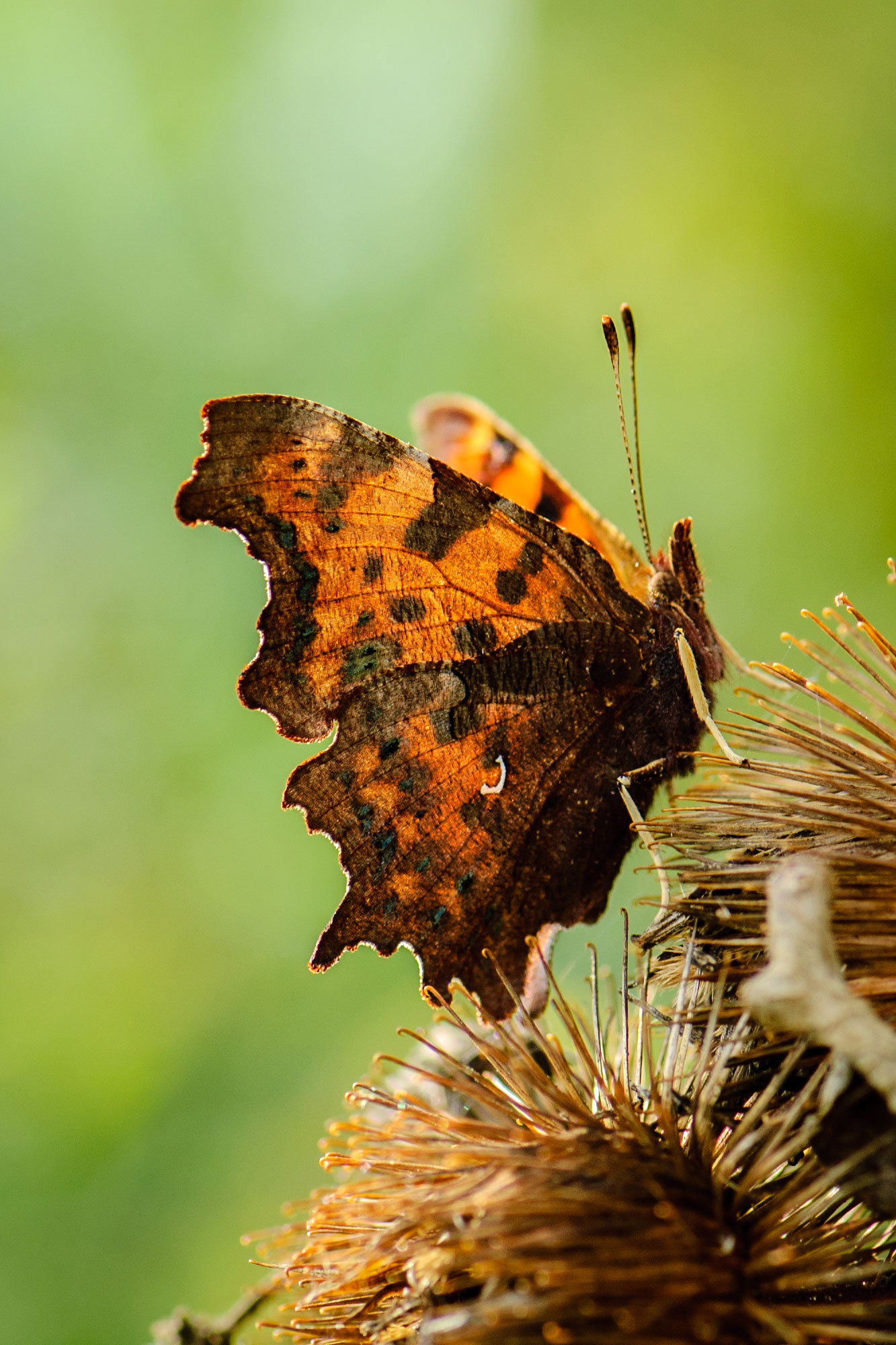
Distribution Maps
2005-2009
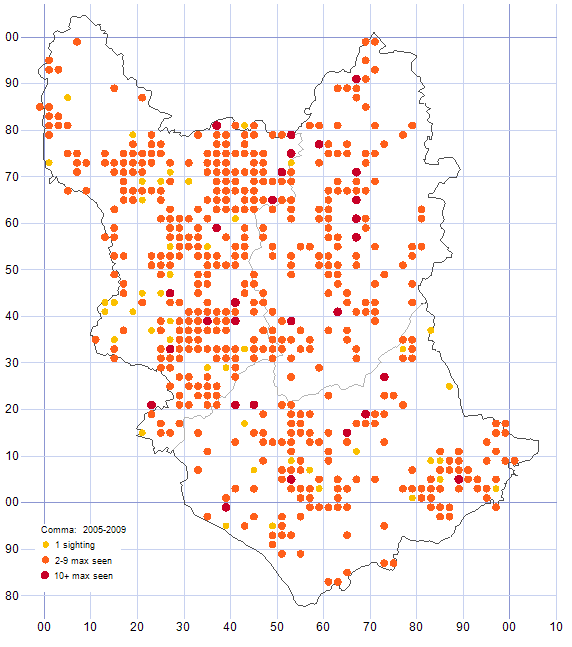
2010-14
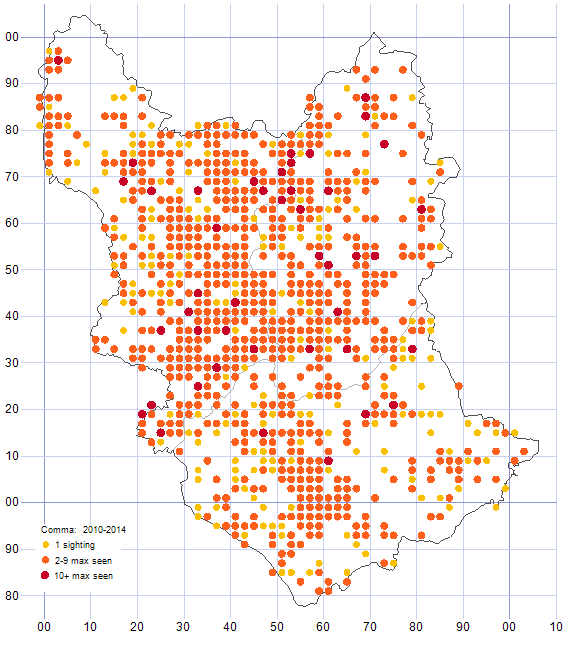
2015-19
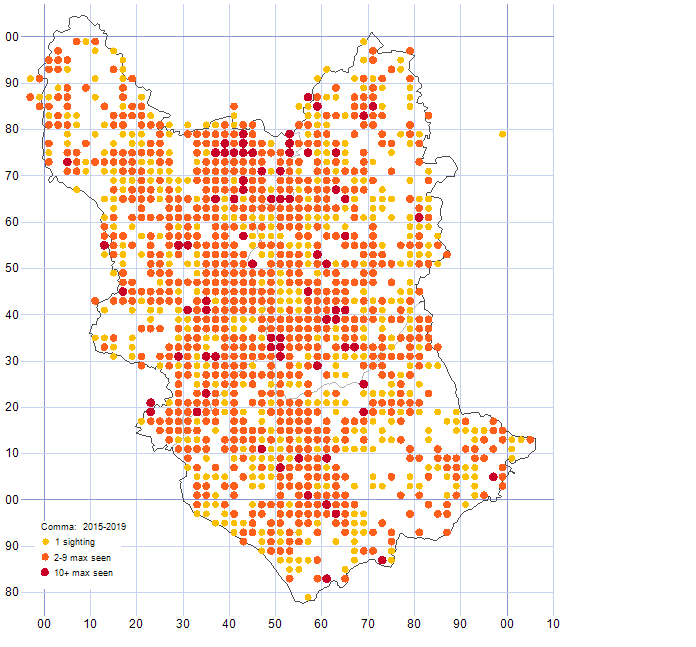
2020-24
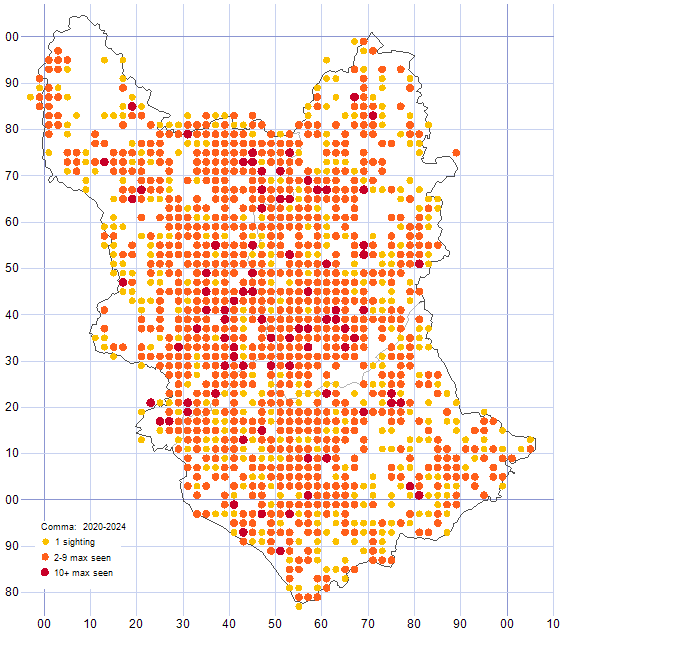
2015
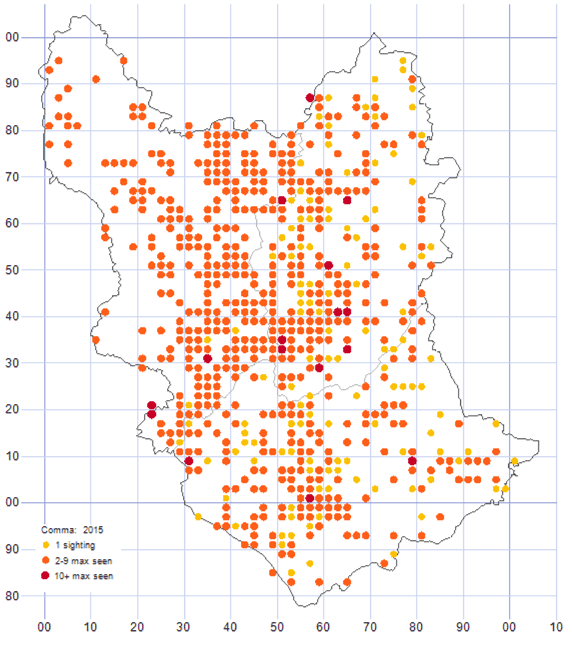
| No of tetrads | 668 |
|---|---|
| First sighting | 14/02/2015 |
| Last sighting | 15/11/2015 |
2016
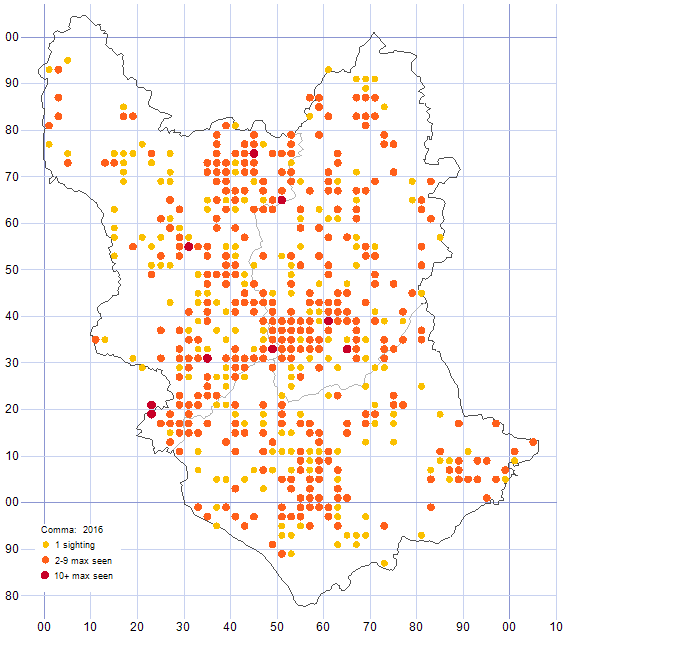
| No of tetrads | 530 |
|---|---|
| First sighting | 22/02/2016 |
| Last sighting | 15/11/2016 |
2017
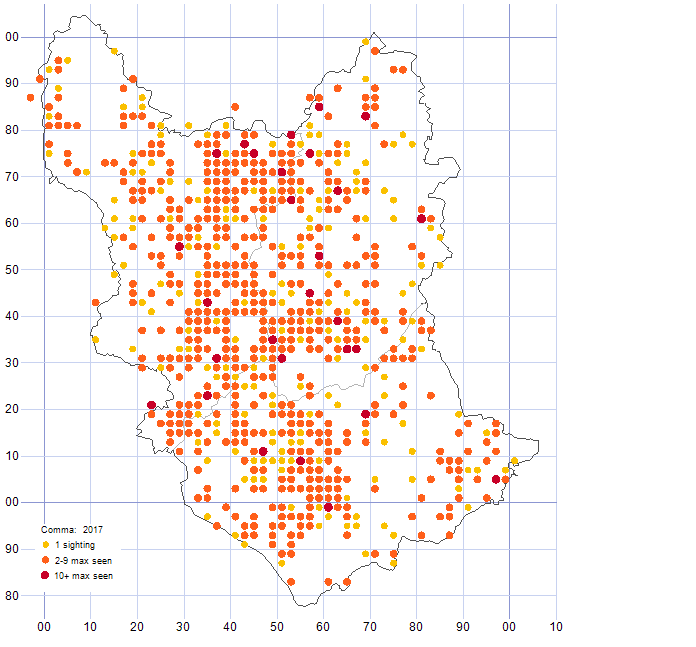
| No of tetrads | 732 |
|---|---|
| First sighting | 18/02/2017 |
| Last sighting | 15/11/2017 |
2018
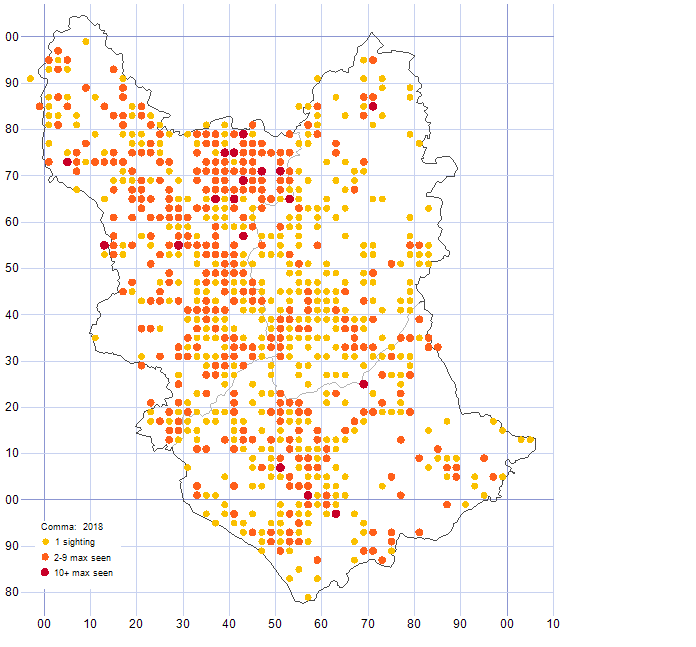
| No of tetrads | 770 |
|---|---|
| First sighting | 19/01/2018 |
| Last sighting | 13/11/2018 |
2019
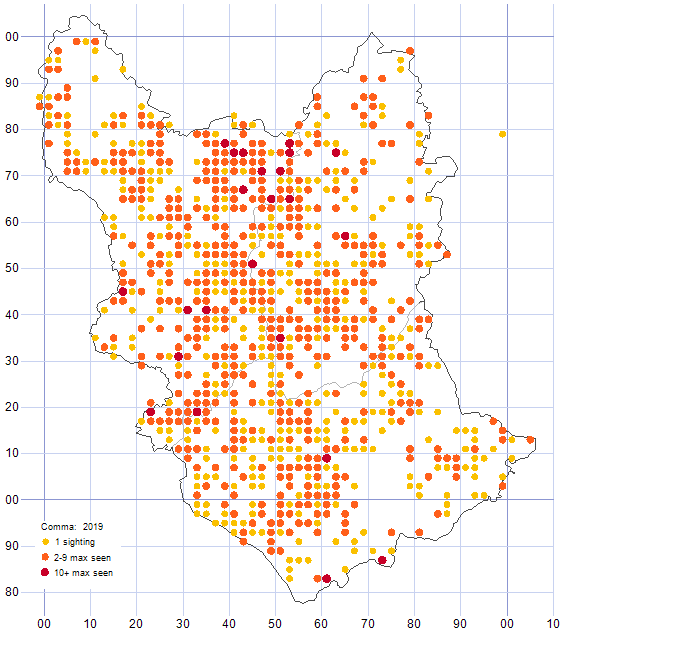
| No of tetrads | 872 |
|---|---|
| First sighting | 08/01/2019 |
| Last sighting | 09/11/2019 |
2020
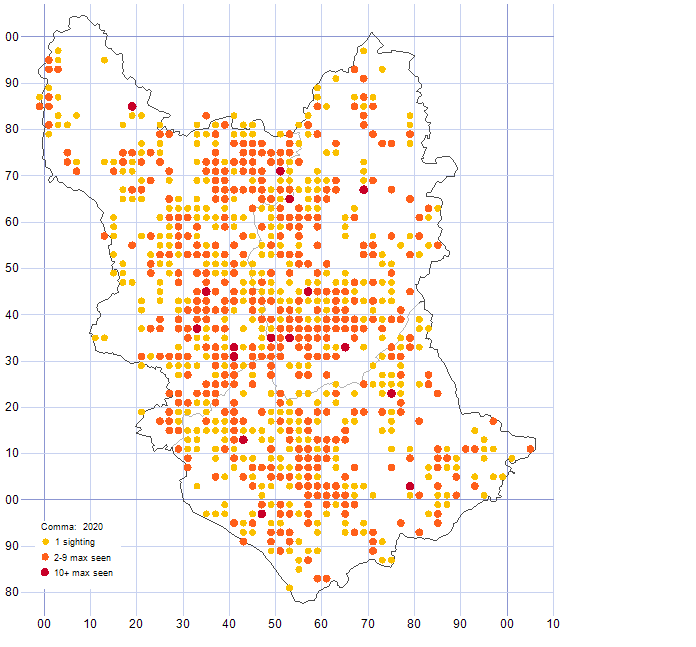
| No of tetrads | 831 |
|---|---|
| First sighting | 06/03/2020 |
| Last sighting | 04/11/2020 |
2021
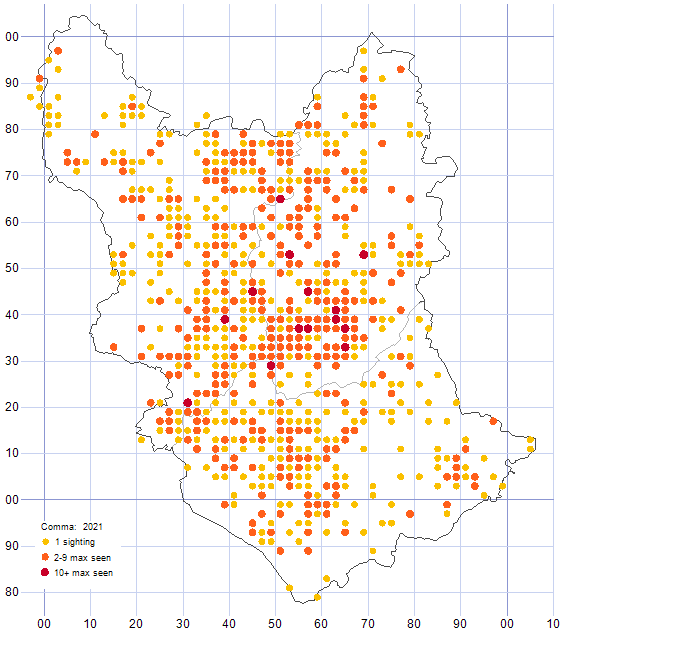
| No of tetrads | 701 |
|---|---|
| First sighting | 03/01/2021 |
| Last sighting | 15/12/2021 |
2022
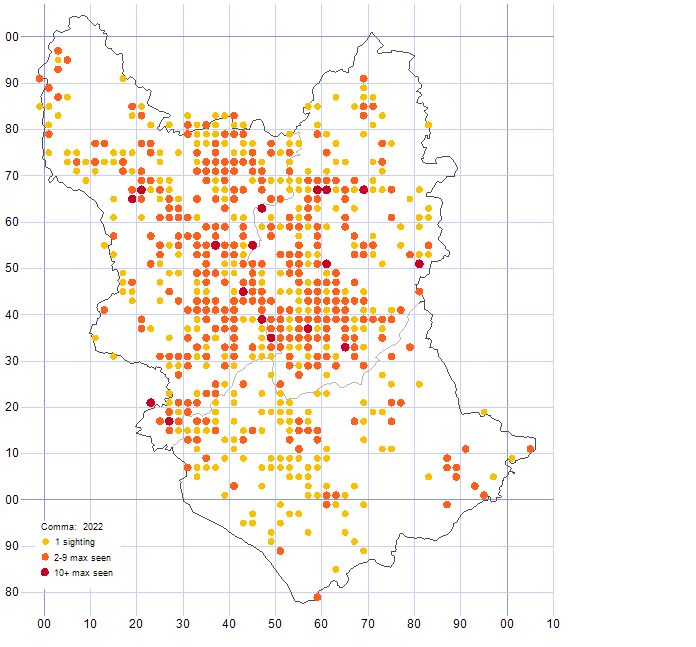
| No of tetrads | 745 |
|---|---|
| First sighting | 13/01/2022 |
| Last sighting | 12/11/2022 |
2023
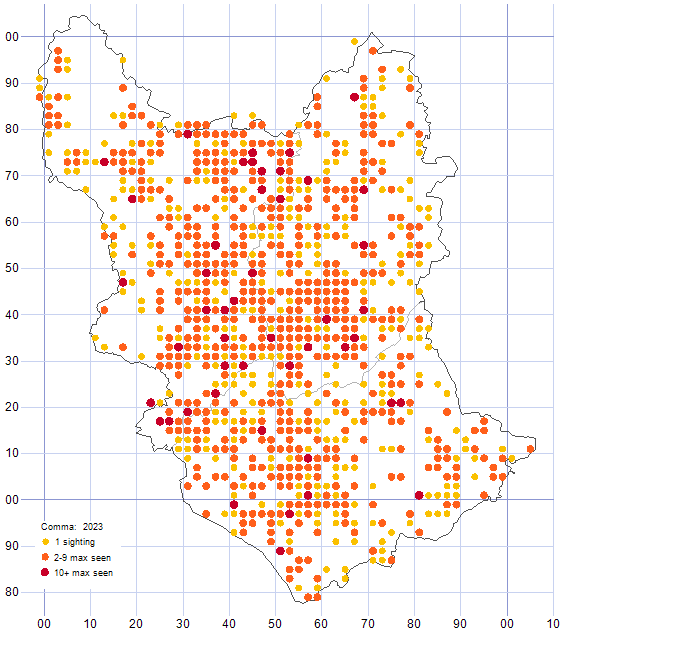
| No of tetrads | 917 |
|---|---|
| First sighting | 17/03/2023 |
| Last sighting | 24/11/2023 |
2024
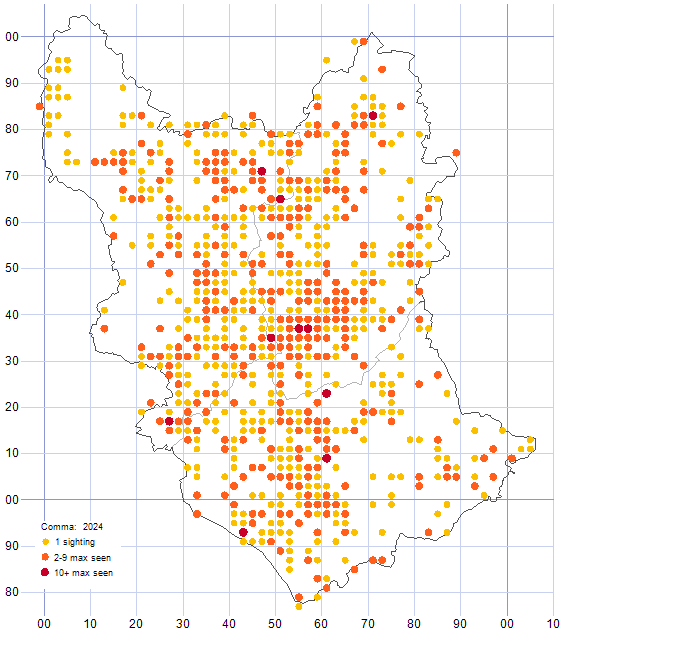
| No of tetrads | 750 |
|---|---|
| First sighting | 05/01/2024 |
| Last sighting | 12/11/2024 |
